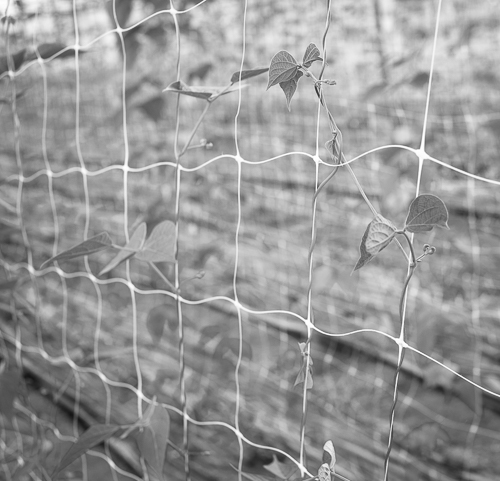On the lowlands of Barega near the town of Carbonia, we meet Antonio Cadeddu, drawing on his ancestors, his calling, the local environment and local traditions, has planted a wide variety of vegetables in greenhouses and in open air. He’s also raising a flock of sheep.
Antonio has a strong attachment to his land, but he’s also very attached to his animals, and he feels like more a shepherd than a farmer.
Having entered the greenhouse where Antonio has been cultivating beans, he explains that all the bean plants have failed and all his work has been in vain. All the plants have to be uprooted, the soil has to be prepared again, the artificial irrigation must be rearranged and new plants have to be replanted one by one. Strong heat caused a very quick growth of the stems, leading to that it wasn’t possible to prune them in time. This made them bend over towards the soil, making them wither.
Anyway, he doesn’t seem to be the least disturbed by this, making us understand that he has already taken it into account and that he just has to accept it, unforeseen events happen, you just have to be decisive and react fast.
He also cultivates three different types of tomatoes: cherry tomatoes, red bunch tomatoes, and round salad tomatoes. Growing tomatoes gives him lots of satisfaction even though they need constant attention because they are subject to various diseases and parasites.
Antonio also explains with confidence the characteristics of the plants he is cultivating: beans, tomatoes, squash/courgette/zucchini, pumpkins, etc. Pumpkins can be grown outside, they are resistant against diseases and heat and able to absorb nutrients like nitrogen, phosphorus, and potassium from the soil. He explains the lives of the plants and their characteristics thoroughly, including how to counteract that the plants get ill and how to cure them of specific diseases. Continuous attention to parasites and symptoms of diseases are necessary for the whole life of the plants. Thus, only plant varieties, which are adapted to the environment, should be cultivated. Systematic controls of the plants have to be done and, regarding tomato plants, the leaves in particular. In case of symptoms of disease, immediate precautions should be taken, else the disease may spread to adjacent plants, then to all of them.
He also describes the main symptoms of diseases, but emphasises that continuous attention and prompt action in case of diseases is the the only way to halt them.
One of the most common parasites is the whitefly. They introduce toxic saliva inside the leaves, leading to that they can also bring viruses and bacteria. Besides, they secrete honeydew, which encourages mold growth.
The plants can also be attacked by fungi, but they can be identified early upon close inspection.
It seems like Antonio is as concerned about the welfare of the plants as he is about his animals. Obviously, he’s very passionate about both of them.
Additionally, he has built a huge cabin nearby, in the same way as shepherds were doing in the past, consisting of wooden poles embedded in the ground with branches linking the poles.
Inside the cabin there is a large collection of tools, objects, and utensils used in the past in order to cultivate and harvest agricultural products as well as to do various practical activities typical for this region.
A pleasant smell of coffee fills this unpretentious ethnographic museum where Antonio’s wife, Rita, is preparing coffee for us and their friends. If we had yielded to curiosity, observing tool by tool, being lectured by Antonio on the use of each one, in addition to staying in this hospitable atmosphere, we could have stayed for hours. Instead, we left, but not before having been greeted by two Tibetan goats, one of them a male which seemed to want to tip me over. Being quite small, it was easy to resist.

